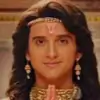Hello - I was bought up in Andhra and my education was all in east godavari where telugu culture is really celebrated. I am going to give you a brief idea of the telugu marriages which I have seen and attended during my growing up years.
Usually engagement happens according to the wishes of the family members. Some families do engagement months before and some do it only a week or sometimes a day before the marriage.
Wedding rituals :-
Pasupu stanaalu(Haldi bath):- A day before on the auspicious muharat about 5 suhagaan(neighbors, family members) give the haldi bath to both the groom and bride. Some families do it separately, some exchange the haldi. Most of the marriages I saw they do it separately to the groom and the bride.
Once the haldi is done, usually the bride and bridegroom both are not allowed to go out of the house and they are always adorned with the black dot on their cheeks to ward off the evil eyes. During the Haldi bath usually a small girl and a small boy from the immediate family are selected to be thodu pellikuturu/thodu pellikoduku (stand-by bride and groom). It is just a custom and a belief that if evil tries to cast its shadow on the bride and the groom, it will be confused as to who is the real one. The kids are usually less than 10 years of age and are immediate family members like kids of aunts, cousins or some one like that. The kids are also given expensive clothes and the only thing they do is to be with the respective bride or groom all through the function.
Gowri Puja:- Before the bride is bought on to the wedding mandap, she is made to do gowri puja to goddess parvati to pray for a long and happy married life. She is usually given a saree either from maternal uncle's side or the bridegroom's side and the puja is usually kumkum archana and gowri vrath kind of puja. The bridegroom will be doing the mantras and puja separately.
Bringing the bride to the wedding mandap:- Usually a big white cloth is held in front of the bridegroom to avoid him seeing the bride. The bride is bought to the mandap by the maternal uncle. Some families make the bride sit in a basket and maternal uncles and cousins carry the basket. The bride will be carrying a green unpeeled coconut in her hands. The bride is made to sit on the other side of the white cloth.
Kanya daan:- The parents of the bride do the kanya daan by washing the feet of the bridegroom.
Jeerakarla bellam (cumin - jaggery mixture);- In Telugu marriages the auspicious muhuraat refers to the time when the bride and bridegroom place a betal leaf containing mixture of cumin and jaggery on each other's head. That is the auspicious muhuraat for telugu people and not the mangalsutra tying one. The priests give the betel leaf containing this mixture to both bride and bridegroom and tell them to put on the other person's head. All this is done with the white cloth still held in between the bride and groom. Once both the bride and groom place the holy leaf on each other's head the white cloth is yanked off and officially the bride and groom can see each other. The people who came for the wedding will shower their blessings on the couple by showering the turmeric rice and flowers.
Mangalsutra:- The bridegroom ties the mangalsutra to the bride. Usually in telugu people the women wear 2 small cups kind of things(sutralu) in their wedding chain. one is given by the maternal house and one is given by the husband's house. During marriage, the sutralu are woven in yellow thread and the bridegroom ties the sutralu separately with three knots. I mean the groom first ties one thread containing one sutralu with 3 knots and then ties the second one again with 3 knots. The bride keeps both the threads for 16 days or a month depending on whatever is the family custom and then on an auspicious day the sutralu are transferred into a wedding chain usually a gold one. For mangalsutra ceremony, the bride changes into an off-white or beige colored saree with red border and the groom wears all white. The white clothes are called madhu parkaalu.
Then it is all the same. Some marriages have saptapadi(the walking around the fire). Then you have the bidaai which is called as appa gintalu.
Hope this helps you.
Edited by PSharada - 4 years ago































